#ruth langston
Note
First off I wanna say I love Elsa's song and the amazing devil...
Do you think you could make a web weave of your best friend cutting you off after years? It's been a lot on me :(
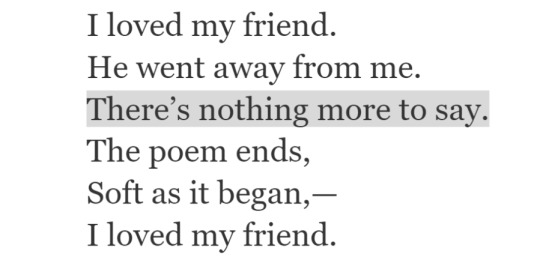
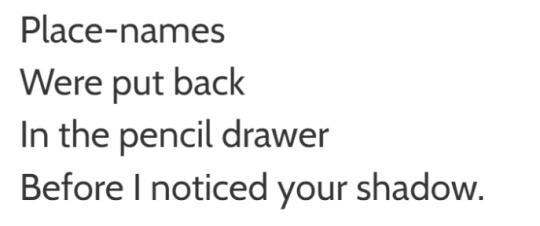





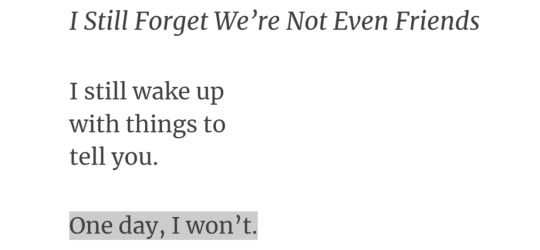






What do I do with myself now? On: Friendship and endings.
I hope this is alright. It's been... a few years since someone's called me their best friend? So my implied emotion might be a tad off.
Poem, Langston Hughes | Near Miss, Fanny Howe | Bluets, Maggie Nelson | @/petrichara | Spirit Hold Part 2, Holly Warburton (desaturated) | The Graveyard Book, Neil Gaiman | Cough It Out, The Front Bottoms | Honeybee: "I Still Forget We’re Not Even Friends", Trista Mateer | To My Oldest Friend, Whose Silence Is Like a Death, Lloyd Schwartz | @/becherdireinen | If You Knew, Ruth Muskrat Bronson | Cocaine Jesus, Rainbow Kitten Surprise | The Beautiful and Damned, F. Scott Fitzgerald | @/inkskinned
[transcriptions and image ID in alt text]
#webweaving#parallels#web weave#web weaving poetry#prose#compilation#on friendship#literature#losing friends#༺✿ web weaves by basil ✿༻#requests#langston hughes#fanny howe#maggie nelson#trista mateer#lloyd schwartz#ruth muskrat bronson#f. scott fitzgerald#i have a whole Thing with forget-me-nots so it seemed fitting to use that as part of my silly introduction ;^^
148 notes
·
View notes
Text

FATHER & SON: James Earl Jones with his Father Robert Earl Jones on Stage in the 1962 Production "Moon on a Rainbow Shawl."
Robert Earl Jones (February 3, 1910 – September 7, 2006), sometimes credited as Earl Jones, was an American actor and professional boxer. One of the first prominent Black film stars, Jones was a living link with the Harlem Renaissance of the 1920s and 1930s, having worked with Langston Hughes early in his career.
Jones was best known for his leading roles in films such as Lying Lips (1939) and later in his career for supporting roles in films such as The Sting (1973), Trading Places (1983), The Cotton Club (1984), and Witness (1985).
Jones was born in northwestern Mississippi; the specific location is unclear as some sources indicate Senatobia, while others suggest nearby Coldwater. He left school at an early age to work as a sharecropper to help his family. He later became a prizefighter. Under the name "Battling Bill Stovall", he was a sparring partner of Joe Louis.
Jones became interested in theater after he moved to Chicago, as one of the thousands leaving the South in the Great Migration. He moved on to New York by the 1930s. He worked with young people in the Works Progress Administration, the largest New Deal agency, through which he met Langston Hughes, a young poet and playwright. Hughes cast him in his 1938 play, Don't You Want to Be Free?.
Jones also entered the film business, appearing in more than twenty films. His film career started with the leading role of a detective in the 1939 race film Lying Lips, written and directed by Oscar Micheaux, and Jones made his next screen appearance in Micheaux's The Notorious Elinor Lee (1940). Jones acted mostly in crime movies and dramas after that, with such highlights as Wild River (1960) and One Potato, Two Potato (1964). In the Oscar-winning 1973 film The Sting, he played Luther Coleman, an aging grifter whose con is requited with murder leading to the eponymous "sting". In the later 20th century, Jones appeared in several other noted films: Trading Places (1983) and Witness (1985).
Toward the end of his life, Jones was noted for his stage portrayal of Creon in The Gospel at Colonus (1988), a black musical version of the Oedipus legend. He also appeared in episodes of the long-running TV shows Lou Grant and Kojak. One of his last stage roles was in a 1991 Broadway production of Mule Bone by Hughes and Zora Neale Hurston, another important writer of the Harlem Renaissance. His last film was Rain Without Thunder (1993).
Although blacklisted by the House Un-American Activities Committee in the 1950s due to involvement with leftist groups, Jones was ultimately honored with a lifetime achievement award by the U.S. National Black Theatre Festival.
Jones was married three times. As a young man, he married Ruth Connolly (died 1986) in 1929; they had a son, James Earl Jones. Jones and Connolly separated before James was born in 1931, and the couple divorced in 1933. Jones did not come to know his son until the mid-1950s. He adopted a second son, Matthew Earl Jones. Jones died on September 7, 2006, in Englewood, New Jersey, from natural causes at age 96.
THEATRE
1945 The Hasty Heart (Blossom) Hudson Theatre, Broadway
1945 Strange Fruit (Henry) McIntosh NY theater production
1948 Volpone (Commendatori) City Center
1948 Set My People Free (Ned Bennett) Hudson Theatre, Broadway
1949 Caesar and Cleopatra (Nubian Slave) National Theatre, Broadway
1952 Fancy Meeting You Again (Second Nubian) Royale Theatre, Broadway
1956 Mister Johnson (Moma) Martin Beck Theater, Broadway
1962 Infidel Caesar (Soldier) Music Box Theater, Broadway
1962 The Moon Besieged (Shields Green) Lyceum Theatre, Broadway
1962 Moon on a Rainbow Shawl (Charlie Adams) East 11th Street Theatre, New York
1968 More Stately Mansions (Cato) Broadhurst Theatre, Broadway
1975 All God's Chillun Got Wings (Street Person) Circle in the Square Theatre, Broadway
1975 Death of a Salesman (Charley)
1977 Unexpected Guests (Man) Little Theatre, Broadway
1988 The Gospel at Colonus (Creon) Lunt-Fontanne Theatre, Broadway
1991 Mule Bone (Willie Lewis) Ethel Barrymore Theatre, Broadway
FILMS
1939 Lying Lips (Detective Wenzer )
1940 The Notorious Elinor Lee (Benny Blue)
1959 Odds Against Tomorrow (Club Employee uncredited)
1960 Wild River (Sam Johnson uncredited)
1960 The Secret of the Purple Reef (Tobias)
1964 Terror in the City (Farmer)
1964 One Potato, Two Potato (William Richards)
1968 Hang 'Em High
1971 Mississippi Summer (Performer)
1973 The Sting (Luther Coleman)
1974 Cockfighter (Buford)
1977 Proof of the Man (Wilshire Hayward )
1982 Cold River (The Trapper)
1983 Trading Places (Attendant)
1983 Sleepaway Camp (Ben)
1984 The Cotton Club (Stage Door Joe)
1984 Billions for Boris (Grandaddy)
1985 Witness (Custodian)
1988 Starlight: A Musical Movie (Joe)
1990 Maniac Cop 2 (Harry)
1993 Rain Without Thunder (Old Lawyer)
TELEVISION
1964 The Defenders (Joe Dean) Episode: The Brother Killers
1976 Kojak (Judge) Episode: Where to Go if you Have Nowhere to Go?
1977 The Displaced Person (Astor) Television movie
1978 Lou Grant (Earl Humphrey) Episode: Renewal
1979 Jennifer's Journey (Reuven )Television movie
1980 Oye Ollie (Performer) Television series
1981 The Sophisticated Gents (Big Ralph Joplin) 3 episodes
1982 One Life to Live
1985 Great Performances (Creon) Episode: The Gospel at Colonus
1990 True Blue (Performer) Episode: Blue Monday
#james earl jones#black tumblr#black literature#black community#black excellence#blackexcellence365#actor#robert earl jones#stage actor
188 notes
·
View notes
Text
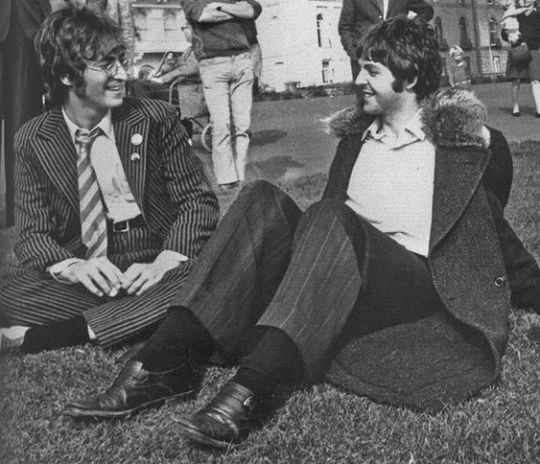
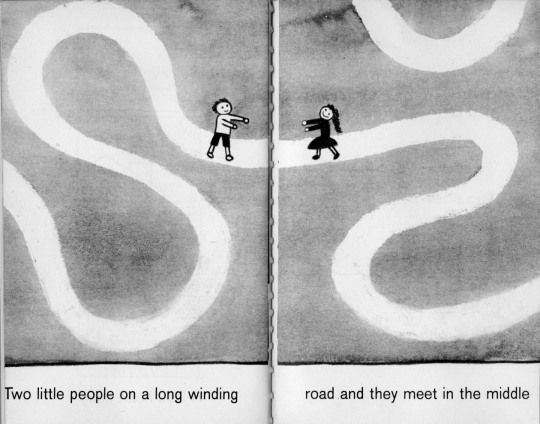
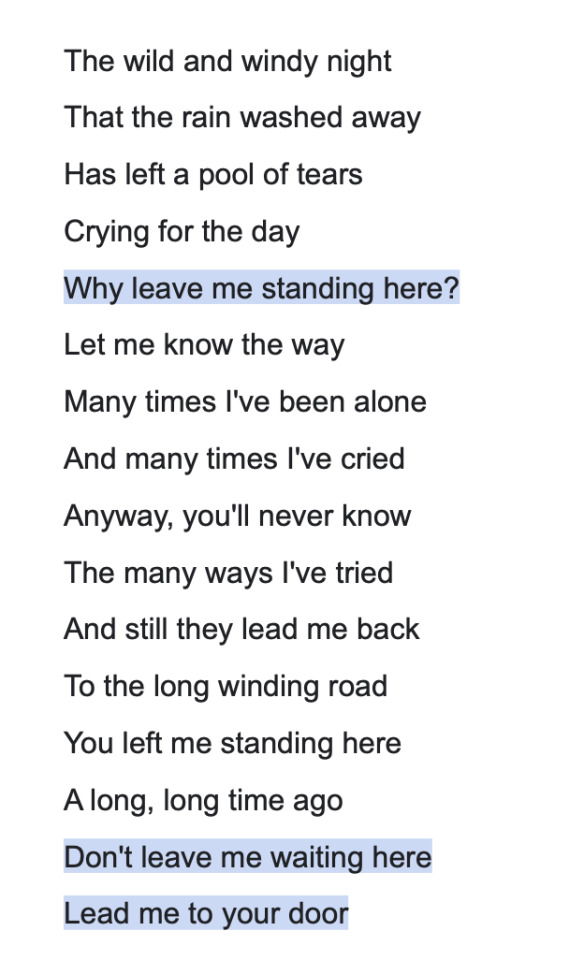

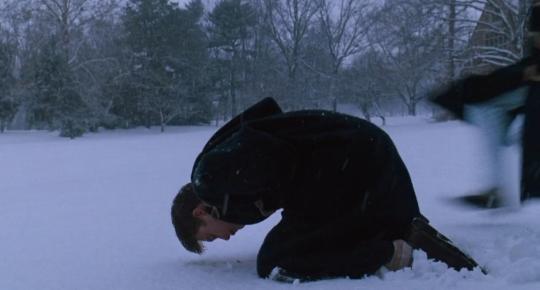

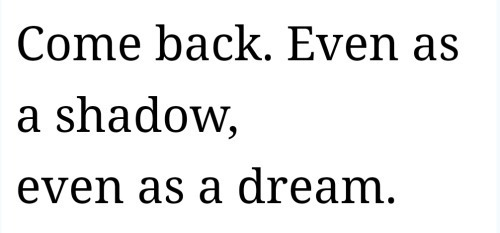
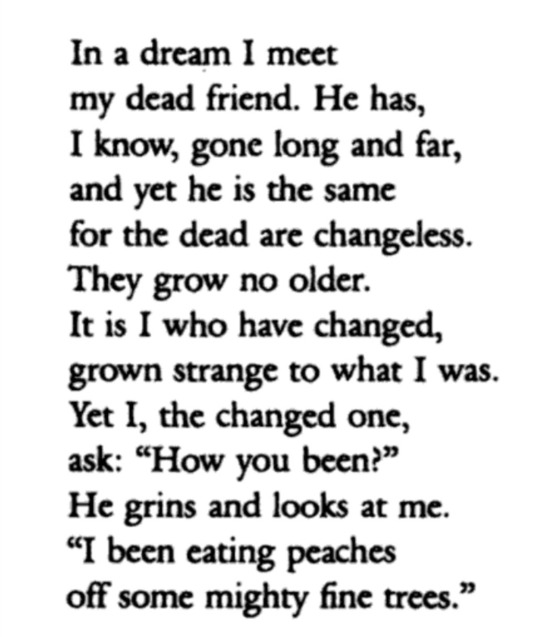
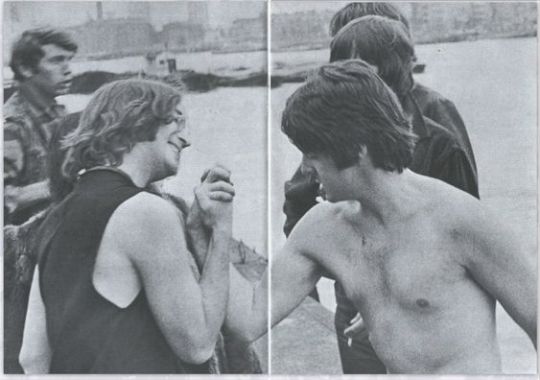





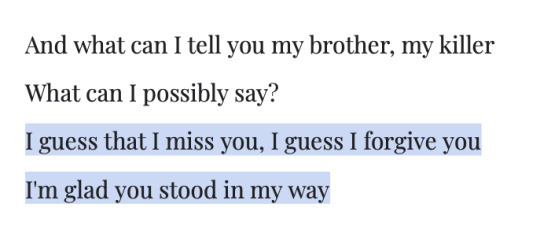
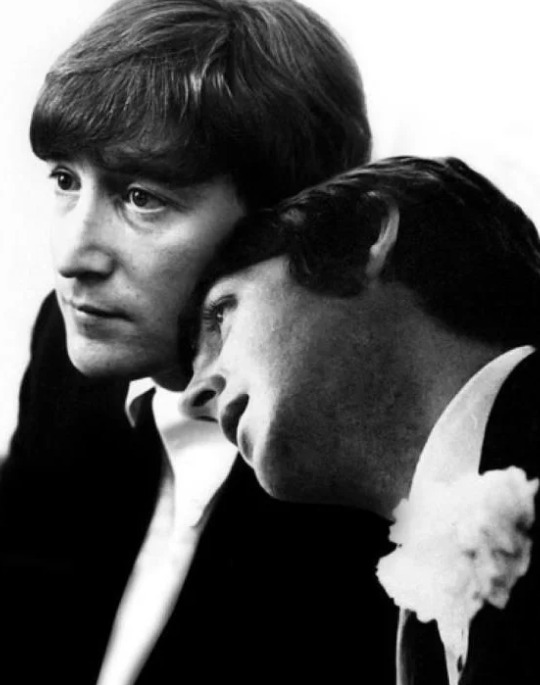
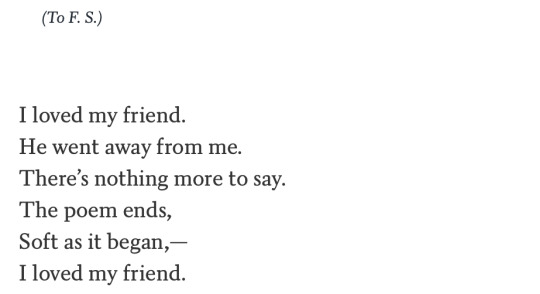
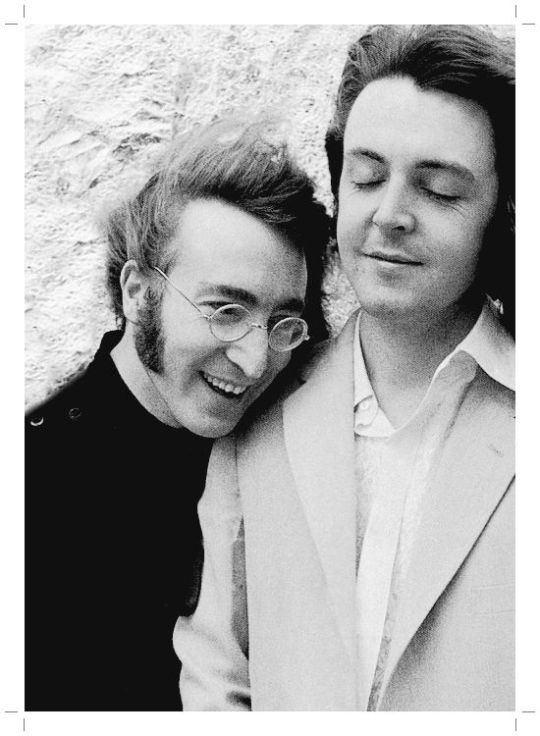
Paul McCartney and John Lennon on longing -
1. A moon or a button by Ruth Krauss 2. The Long and Winding Road: The Beatles (Lennon-McCartney) 3. Dead Poets Society (1989) dir. Peter Weir 4. Paul McCartney at Glastonbury 2022 5. Euripides, Grief Lessons: Four Plays by Euripides: tr. Anne Carson 6. A Meeting by Wendell Berry 7. Stand By Me (1986) dir. Rob Reiner 8. Paul and Linda McCartney interviewed by Joan Goodman for Playboy magazine 1984 9. The Triumph of Achilles by Louise Glück 10. Brokeback Mountain (2005) dir. Ang Lee 11. Famous Blue Raincoat by Leonard Cohen 12. I Loved My Friend by Langston Hughes
#its mclennon day fuckers get ready for me to be insufferable and crazy!!#mclennon#the beatles#web weaving#guys will be so crazy and its because they are making multiple mclennon web weaves at one time#anyways#happy mclennon day to all who celebrate#:]#stop tagging that the one photo is fake it was chosen for a reason#pls understand why i would pick photos that are doctored for this. moments that shouldve been but never were.....pls get the point#mine
367 notes
·
View notes
Text
List of poets whose work I've posted:
Poetry Magazine selections
The Adroit selections
Diode Poetry selections
Sixth Finch selections
Ada Limon
Adam Zagajewski
Adonis
Allen Ginsberg
Amy Clampitt
Andrea Cohen
Anna Akhmatova
Anna Swir
Anne Sexton
Ben Johnson
Billy Collins
Cathy Linh Che
Carolyn Marie Rodgers
Chard deNiord
Christina Rossetti
Czesław Miłosz
Dalton Day
Denise Levertov
Dian Million
Donika Kelly
Dorianne Laux
Edward Hirsch
Elizabeth Bishop
Elizabeth “Sister Goodwin” Hope
Ellen Bryant Voigt
Gloria Bird
Gregory Orr
Gwendolyn MacEwen
Henry Wadsworth Longfellow
Jack Gilbert
James Hayford
James Longenbach
Jenny George
Jim Harrison
Joanna Newsom
John Berryman
John Dowland
John Keats
Jorie Graham
Joy Harjo
Kitchen McKeown
Kuhu Joshi
Langston Hughes
Linda Pastan
Lisel Mueuller
Louise Glück
Mary Karr
Mary Oliver
Mary Tallmountain
Matt Hohner
Matt Rasmussen
Matthew Arnold
Michael Gray Bulla
Miles Walser
Morag Smith
Natalie Diaz
Ocean Vuong
Penny Shutt
Phil Ochs
Phillip B. Williams
Roberta Hill Whiteman
Ronald Wallace
Ruth Stone
Sayat Nova
Stephen Kampa
Sugawara no Michizane
Thomas Lux
T.S. Eliot
Wanda Coleman
W.H. Auden
Will Alexander
Wisława Szymborska
When the Light of the World Was Subdued, Our Songs Came Through: A Norton Anthology of Native Nations Poetry
myself
9 notes
·
View notes
Text

Melvin Beaunorus Tolson (February 6, 1898 – August 29, 1966) was a poet, educator, columnist, and politician. He was influenced both by Modernism and the language and experiences of African Americans, and he was deeply influenced by his study of the Harlem Renaissance.
As a debate coach at Wiley College, he led a team that pioneered interracial college debates against white colleges in the segregated South. This work was depicted in the 2007 biopic The Great Debaters.
He graduated from Lincoln High School in Kansas City. He enrolled at Fisk University but transferred to Lincoln University the next year for financial reasons. He graduated with honors. He became a member of the Omega Psi Phi Fraternity.
In addition to teaching English, he used his high energies in several directions at Wiley. He built an award-winning debate team, the Wiley Forensic Society, which became a pioneer in interracial collegiate debates. Beginning in 1930, the team debated against law students from the University of Michigan; they participated in the first known interracial collegiate debate in the South, against Oklahoma City University. They competed against USC, which they defeated. There he co-founded the Black Intercollegiate Southern Association of Dramatic and Speech Arts and directed the theater club. He coached the junior varsity football team.
He mentored students such as James Farmer and Heman Sweatt. He encouraged his students not only to be well-rounded people but to stand up for their rights. This was a controversial position in the segregated South of the early and mid-20th century.
He began teaching at Langston University, where he worked for the next 17 years. He was a dramatist and director of the Dust Bowl Theater at the university. One of his students at Langston was Nathan Hare, who became the founding publisher of the journal The Black Scholar.
He married Ruth Southall (1922) their first child was Melvin Beaunorus Tolson, Jr., who became a professor at the University of Oklahoma, followed by Arthur Lincoln, who became a professor at Southern University; Wiley Wilson; and Ruth Marie Tolson. #africanhistory365 #africanexcellence #omegapsiphi
2 notes
·
View notes
Note
hi babe! glad to see you posting again <3 i was wondering if you'd be willing to share your favorite 3 heirs to play, and your least favorite?
Ok so I'm going to answer this from a purely gameplay-based perspective on who was a fun sim to play.
3 Favourite Heirs
Marigold/Primrose: I loved playing these gals because they weren't meant to be heir! So when the direction of play changed I create a post-war life for them where they both just swanned about working on their creative hobbies all day. Both sims had different purposes and goals which kept gameplay interesting and I never felt like one was heir over the other. It was also so nice to play them together after separating them from the start.
Ruth: I always wanted to use the heir for the 1930s to play through Cottage Living (back when it was released), and so playing Ruth and Teddy on their farm was fun because I was learning so much about the pack as I played. I also enjoyed the simplicity of their life - work hard, have some babies, living off the land starting with low funds. It was a unique challenge.
Maggie: I was looking forward to playing my 1950s housewife storyline with Maggie and going back to the roots of my Langston gameplay and just having lots of babies and seeing how it turned out - which kept the generation interesting as I developed all their personalities. Maggie was fun to play with because she had to sole parent all the kids, and also making her have her affair with Em without it destroying her marriage was an extra challenge.
3 Least Favourite Heirs
Daisy: OK don't get me wrong I loved Daisy as a sim. But I didn't find her super fun to play with once I got over sending her out to party and romance people constantly/fulfil my goal of her having children with different men. I enjoyed her daughters and the interesting characters that came out of them, but playing Daisy felt quite directionless as she fulfilled her aspiration early and didn't have a career, and her life was quite messy too with a lot of different living situations.
Douglas: I found Douggie a bit boring, tbh. He was just a Dad and focused on his career. The 1940s became boring after WW2 was finished and the family left the farm.
Leonard: The 1960s were really hard to play. Having a famous musician and actress at the same time, as well as raising children, was a lot of work. Leo fulfilled his career really early and crafting a story around a band when there is no band system built into the game was a lot of work.
71 notes
·
View notes
Photo





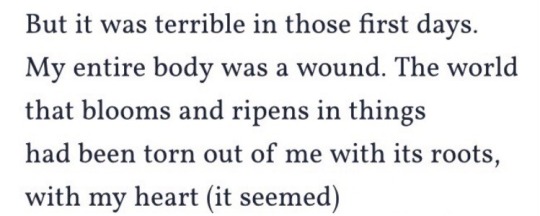



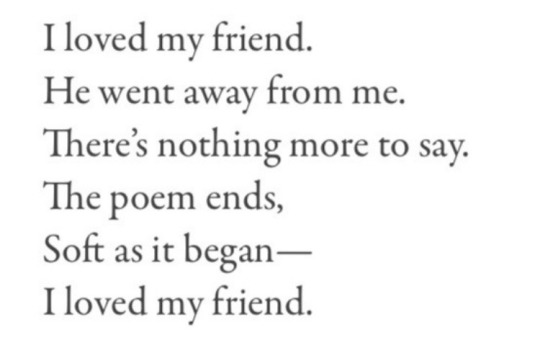
c!beeduo from c!tubbo’s pov | dsmp web weaves
anonymous | ryan o’connell | titsay (twt) | m. l. rio | shakespeare | anne sexton | j. r. r. tolkien | rainer maria rilke | ruth stone | wandavision | rebecca makkai | bts | langston hughes
#c!beeduo#beeduo#c!ranboo#c!tubbo#ranboo#tubbo#dsmp#dream smp#dsmp web weave#web weaving#web weave#i had to combine a few of them to get them all to fit cause i couldnt restrict myself to just 10 aaaaaaaaaaaaaaa
30 notes
·
View notes
Photo
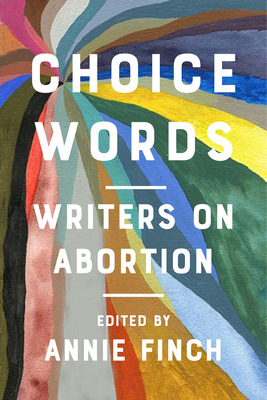


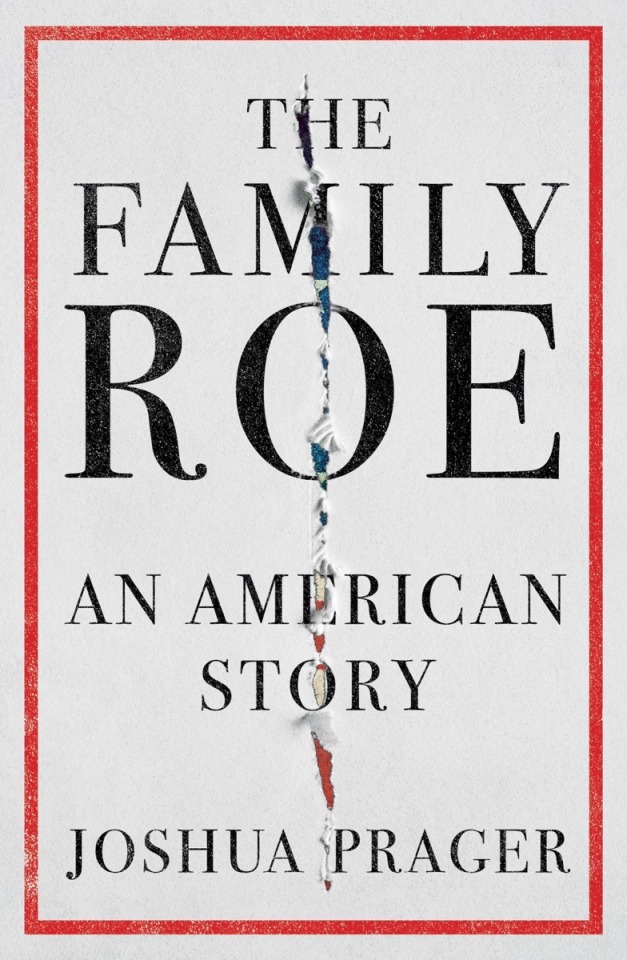
More Nonfiction Book Recs: Women’s Rights Are Human Rights
Choice Words edited by Annie Finch
This landmark literary anthology of poems, stories, and literary essays about abortion, Choice Words: Writers on Abortion, is a powerful collection of timely pieces on the struggle to defend reproductive rights. Twenty years in the making, this book spans continents and centuries; the manuscript includes Audre Lorde, Margaret Atwood, Lucille Clifton, Amy Tan, Gloria Steinem, Ursula Le Guin, Gwendolyn Brooks, Joyce Carol Oates, Gloria Naylor, Dorothy Parker, Ruth Prawer Jhabvala, Anne Sexton, Ntozake Shange, Sholeh Wolpe, Ai, Jean Rhys, Mahogany L. Browne, Shirley Geok-lin Lim, Frank O’Hara, Vi Khi Nao, Sharon Olds, Judith Arcana, Alice Walker, Lucille Clifton, Molly Peacock, Carol Muske-Dukes, Mo Yan, Leslie Marmon Silko, Bobbie Louise Hawkins, Kathy Acker, Anne Sexton, Langston Hughes, Sharon Doubiago, and numerous other classic and contemporary writers including voices from Canada, France, China, India, Iran, Ireland, Kenya, and Pakistan.
Ruth Bader Ginsburg by Jane Sherron De Hart
In this comprehensive, revelatory biography - fifteen years of interviews and research in the making - historian Jane Sherron De Hart explores the central experiences that crucially shaped Ginsburg’s passion for justice, her advocacy for gender equality, and her meticulous jurisprudence.
At the heart of her story and abiding beliefs is her Jewish background, specifically the concept of tikkun olam, the Hebrew injunction to “repair the world,” with its profound meaning for a young girl who grew up during the Holocaust and World War II.
Ruth’s journey begins with her mother, who died tragically young but whose intellect inspired her daughter’s feminism. It stretches from Ruth’s days as a baton twirler at Brooklyn’s James Madison High School to Cornell University to Harvard and Columbia Law Schools; to becoming one of the first female law professors in the country and having to fight for equal pay and hide her second pregnancy to avoid losing her job; to becoming the director of the ACLU’s Women’s Rights Project and arguing momentous anti-sex discrimination cases before the U.S. Supreme Court.
All this, even before being nominated in 1993 to become the second woman on the Court, where her crucial decisions and dissents are still making history. Intimately, personably told, this biography offers unprecedented insight into a pioneering life and legal career whose profound mark on American jurisprudence, American society, and our American character and spirit will reverberate deep into the twenty-first century and beyond.
Credible by Deborah Tuerkheimer
In this landmark book, a former prosecutor, legal expert, and leading authority on sexual violence examines why allegations of sexual misconduct and abuse are often not believed - and why we live in a nation that is both culturally and legally structured to doubt and dismiss accusers.
Sexual misconduct accusations rest on opposing viewpoints: her word against his. How do we decide who is telling the truth? The answer comes down to credibility. But as this eye-opening book reveals, deciding which side to believe isn’t as straightforward as it seems. Our judgment is complicated by invisible forces - false assumptions and hidden biases imbedded in our culture, our legal system, and our psyches - that create blind spots impairing our ability to accurately hear and respond fairly.
In Credible, Deborah Tuerkheimer provides a much-needed framework to help us better understand credibility, explaining how we perceive it, how and why our perceptions are distorted, and how those distortions harm individual lives. Because of societal hierarchies and inequalities, who we disbelieve is predictable and patterned, leading to what Tuerkheimer calls the “credibility discount” - our dismissal of certain kinds of statements by certain kinds of speakers, including women, BIPOC, LGBTQIA, immigrants, and other marginalized individuals.
The rise of the #MeToo movement has exposed this inequity - how these victims have been badly served by a system that is not designed to protect them. Using case studies, moving first-hand accounts, science, and the law, Tuerkheimer identifies patterns and their causes, analyzes the role of power, and examines the close, reciprocal relationship between culture and law - to help us more clearly determine who and what is credible.
#MeToo has touched off a massive reckoning. Credible helps us forge a path forward to ensuring fair, equitable treatment of the countless individuals affected by sexual misconduct.
The Family Roe by Joshua Prager
Despite her famous pseudonym, “Jane Roe,” no one knows the truth about Norma McCorvey (1947–2017), whose unwanted pregnancy in 1969 opened a great fracture in American life. Journalist Joshua Prager spent hundreds of hours with Norma, discovered her personal papers - a previously unseen trove - and witnessed her final moments. The Family Roe presents her life in full. Propelled by the crosscurrents of sex and religion, gender and class, it is a life that tells the story of abortion in America.
Prager begins that story on the banks of Louisiana’s Atchafalaya River where Norma was born, and where unplanned pregnancies upended generations of her forebears. A pregnancy then upended Norma’s life too, and the Dallas waitress became Jane Roe.
Drawing on a decade of research, Prager reveals the woman behind the pseudonym, writing in novelistic detail of her unknown life from her time as a sex worker in Dallas, to her private thoughts on family and abortion, to her dealings with feminist and Christian leaders, to the three daughters she placed for adoption.
Prager found those women, including the youngest - Baby Roe - now fifty years old. She shares her story in The Family Roe for the first time, from her tortured interactions with her birth mother, to her emotional first meeting with her sisters, to the burden that was uniquely hers from conception.
The Family Roe abounds in such revelations - not only about Norma and her children but about the broader “family” connected to the case. Prager tells the stories of activists and bystanders alike whose lives intertwined with Roe. In particular, he introduces three figures as important as they are unknown: feminist lawyer Linda Coffee, who filed the original Texas lawsuit yet now lives in obscurity; Curtis Boyd, a former fundamentalist Christian, today a leading provider of third-trimester abortions; and Mildred Jefferson, the first black female Harvard Medical School graduate, who became a pro-life leader with great secrets.
An epic work spanning fifty years of American history, The Family Roe will change the way you think about our enduring American divide: the right to choose or the right to life.
#women's rights#nonfiction#book recs#book recommendations#reading recommendations#library books#TBR pile#tbr#to read#booklr
4 notes
·
View notes
Text




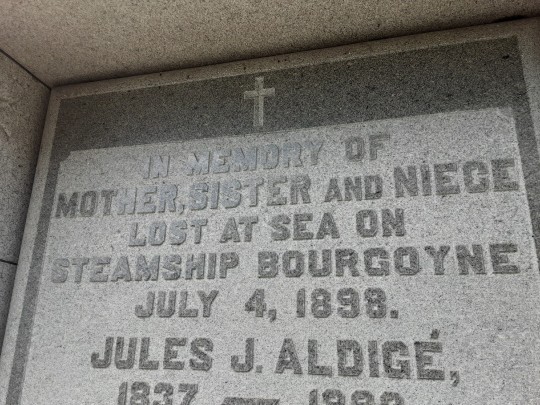


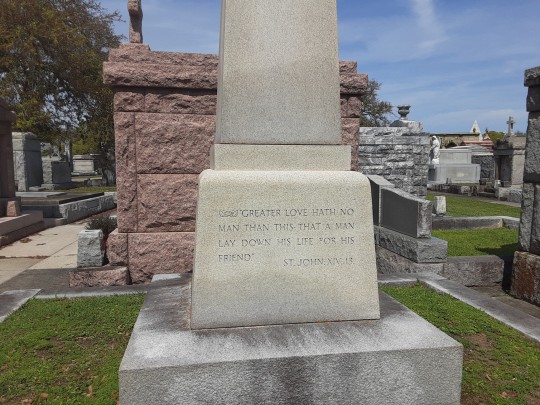
Various epitaphs seen on graves around New Orleans.
(epitaph lines transcribed below the cut)
1. "Greater love hath no man than this: that a man lay down his life for his friend."
2. "My wish gratified. My grave sealed."
3. "Her last words were 'I am going home.'"
4. "In memoriam: the sisters, who owned a French Quarter shop which is now immortalized as the Court of Two Sisters restaurant."
5. "In memory of mother, sister, and niece who was lost at sea on steamship Bourgoyne."
6. "Ruth Langston Ellis, 1899-2007. Lived in three centuries."
7. "Both died on January 26th, 1998, or thereafter, having been left at sea near the Great Barrier Reef."
8. "As all you good people pass by, as you are now so once was I, as I am now so you shall be, so bow your head and pray for me."
1 note
·
View note
Text
What happens to a dream deferred?
“Harlem” was used by Loraine Hansberry as the inspiration for A Raisin in the Sun. Each of the similes in the poem represents one of the main characters (The Younger Family). In your opinion which character matches up to which simile? Write an essay of at least 500-750 words minimum explaining your answer.
Harlem
BY LANGSTON HUGHES
What happens to a dream deferred?
Does it dry up
like a raisin in the sun?
Or fester like a sore—
And then run?
Does it stink like rotten meat?
Or crust and sugar over—
like a syrupy sweet?
Maybe it just sags
like a heavy load.
Or does it explode?
“Harlem” was used by Loraine Hansberry as the inspiration for A Raisin in the Sun. Each of the similes in the poem represents one of the main characters (The Younger Family). In your opinion which character matches up to which simile? Write an essay of at least 500-750 words minimum explaining your answer.
Characters:
Walter Lee – Lena’s son
Ruth – Walter Lee’s wife
Lena – The family matriarch
Beneatha – Walter’s little sister
First appeared on Essay-complete.com
0 notes
Photo
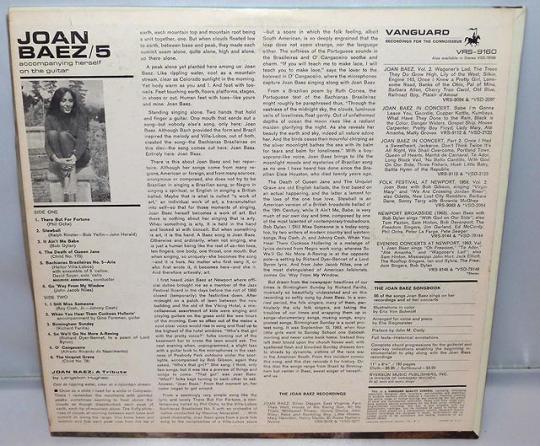
Langston Hughes wrote the liner-notes for Joan Baez’ fifth album, from 1964.
#Langston Hughes#Joan Baez#Joan Baez / 5#Phil Ochs#Bob Gibson#Ruth Correa#Elsie Houston#Bachianas Brasileiras#Richard Fariña#Birmingham Sunday#Johnny Cash#Bob Dylan#John Jacob Niles
54 notes
·
View notes
Photo

Diggin’ Up Business
#Diggin' Up Business#comedy#billy barty#Linnea Quigley#ruth buzzi#yvonne craig#murray langston#funerals
4 notes
·
View notes
Text
I'm making a game!
Hey, y'all! I don't usually make posts, but I wanted to let you know that my team and I have started development on a narrative adventure game in the same vein as Night in the Woods and Mutazione.
Here's our official description: A Brownstone Tourniquet is a 2D story-focused adventure game that invites players to step into the shoes of four people as they navigate Harlem, New York City, in the late 1970s. Lucifer, who goes by Sam, ekes out a meager existence as a dishwasher at a high-end club. Sam finds himself jolted out of his routine when the archangel Gabriel demands that he track down God and convince them to return to Heaven. Things are further complicated when Ruth Ellis, a recent widow, and her two children Alfred and Josie, move into the apartment next to him. Sam soon becomes entwined with the Ellis family and many others, spurring an unforeseeable sequence of events that force Sam to break out of his rut and fight for the people he loves.
Why should you care?
ABT features the following:
- An all-black main cast! (With a majority of the adult characters being aged 35 and up.)
- Frank discussions of grief, mental health, alcoholism, etc. But also the game revolves around themes of moving on, finding new love, learning to cope, what being a part of community means, etc.!
- A neighborhood filled with people to connect with and talk to! (The game revolves around community building!)
- Two LGBT+ storylines that make up the backbone of the game! (MLM and WLW!)
- Story-driven minigames.
- An art style inspired by black artists in the 70s.
- A Jazz/Gospel-based soundtrack!
- Four playable protagonists with four unique storylines/goals.
- You get to punch God in the face. What more do you want?
ABT is also heavily inspired by 70s movies (Mikey and Nicky, Edge of the City, Claudine, Marvin and Tige, etc), the work of James Baldwin and Langston Hughes, Barry Jenkins' filmography, and video footage of Harlem in the late 70s.
NOTE: This game is not a Christian game! It just utilizes the Christian canon for story purposes. I grew up Christian but I'm atheist now and would really love to punch God in the face, hence me making this game lol.
So here's where y'all come in!
I just finished a demo for the first chapter of our game in Twine. It isn't game-y per se at this stage, as I'm mainly focused on getting the dialogue/story right. We're planning on re-implementing dialogue choices when we build the game in Unity.
I was hoping to get some feedback on the demo as it stands. You can play it on mobile or PC. The gameplay is super simple: just read and click the blue links. If a link is purple, that means you've already clicked it.
Play the Demo!
Getting feedback at this stage is critical and it would really mean a lot to me and my team! If you could play the demo and reply to this post with your thoughts that would be amazing! 🥺🥺🥺
(I also recommend listening to our unofficial playlist of inspo music while you play!)
(And if you guys like it I'll post more dev content, art, and music! Thanks for reading!)
#static#game development#black game dev#mikey and nicky#john cassavetes#sidney poitier#ruby dee#claudine#james baldwin#langston hughes#barry jenkins#if beale street could talk#A Brownstone Tourniquet#Black game development#Harlem#harlem renaissance
62 notes
·
View notes
Text
MARCH 30: Nella Larsen (1891-1964)
On this day in 1964, famed author Nella Larsen passed away in her home in Brooklyn. Her most famous novel, Passing (1929), is often considered an early work of lesbian fiction.

Nella Larsen photographed by her friend and patron of the Harlem Renaissance, Carl Van Vechten, on November 23, 1934.
On April 13, Nellie Walker was born in a poor area of Chicago known as the Levee. Her mother was a white immigrant from Denmark and her father was an Afro-Caribbean immigrant hailing from the Danish West Indies, though he died not long after her birth. Her mother, Pederline, soon remarried a fellow white Danish immigrant. Nellie Walker then became Nella Larsen, adopting her stepfather’s surname. The couple had a second daughter and moved to a predominantly white immigrant neighborhood and often encountered discrimination from their neighbors due to Nella’s skin color. As the only black member of her family, critic Darryl Pinckney writes,
“[Larsen] had no entrée into the world of the blues or of the black church. If she could never be white like her mother and sister, neither could she ever be black in quite the same way that Langston Hughes and his characters were black. Hers was a netherworld, unrecognizable historically and too painful to dredge up.”
Nella began her adult life as a nurse, enrolling in school at the Lincoln Hospital in the South Bronx. She began by treating elderly black patients at the Lincoln Nursing Home and then later cared for white patients inflicted by the Spanish flu. In 1915, she relocated to the Tuskegee Institute in Alabama and eventually became the head nurse. After a few years, however, she became disillusioned with the poor working conditions for nurses and left the profession.
In her second act, Nella became the first black woman to graduate from the NYPL Library School. Stationed as a librarian in Harlem at the onset of the 1920s, she arrived at just the right time to witness the birth of the Harlem Renaissance. She began her writing career in 1925 and became friends with many key figures in the arts community, including photographer Carl Van Vechten. Throughout her life, Nella would publish two novels and one short story: the autobiographical Quicksand (1928), Passing (1929), and “Sanctuary” (1930).
While Nella never had any known relationships with women, her 1929 novel Passing has become a tenet of the lesbian literary canon. Set in Harlem, the novel focuses on the relationship between two childhood friends, Clare and Irene. After losing touch in adulthood, the two are later reunited in a chance encounter only for Irene to discover that Clare has been “passing” as white amongst her wealthy husband’s social circle.
When discussing Passing, scholars often focus on the novel’s homoerotic subtext. Upon their first reunion, Irene is struck by Clare’s beauty and is “drawn to Clare like a moth to a flame.” Throughout the novel, Irene becomes increasingly obsessed with Clare and imagines her to be having an affair with her husband Brian, who himself is coded as queer.
Literary critic Deborah McDowell argues that Irene’s jealousy and delusion is a product of her own “awakening of ... erotic feelings for Clare” and that Passing was an opportunity for Nella to "flirt, if only by suggestion, with the idea of a lesbian relationship.” Overall, many believe that that novel’s central metaphor of “passing” pulls double duty in relation to sexuality as well as race.
A film adaptation of Passing starring Ruth Negga and Tessa Thompson premiered at Sundance in January 2021 and will be released by Netflix later in the year.
#nella larsen#passing#ruth negga#tessa thompson#black lesbian history#lesbian history#lgbt history#gay history#lesbian literature#365daysoflesbians
122 notes
·
View notes
Text

A Raisin in the Sun is a play by Lorraine Hansberry that debuted on Broadway in 1959. The title comes from the poem “Harlem” (known as “A Dream Deferred”) by Langston Hughes. The story tells of a Black family’s experiences in south Chicago, as they attempt to improve their financial circumstances with an insurance payout following the death of the father. The New York Drama Critics’ Circle named it the best play of 1959.
With a cast in which all but one character is Black, A Raisin in the Sun was considered a risky investment, and it took over a year for producer Philip Rose to raise enough money to launch it. There was disagreement about how it should be played, with a focus on the mother or a focus on the son. When the play hit New York, Poitier played it with a focus on the son and found not only his calling but an audience enthralled.
After touring to positive reviews, the play premiered on Broadway at the Ethel Barrymore Theatre on March 11, 1959. It transferred to the Belasco Theatre on October 19, 1959, and closed on June 25, 1960, after 530 total performances. Directed by Lloyd Richards, the cast comprised: Ruby Dee as Ruth, Claudia McNeil as Lena, Glynn Turman as Travis, and Sidney Poitier as Walter. #africanhistory365 #africanexcellence
0 notes
Text



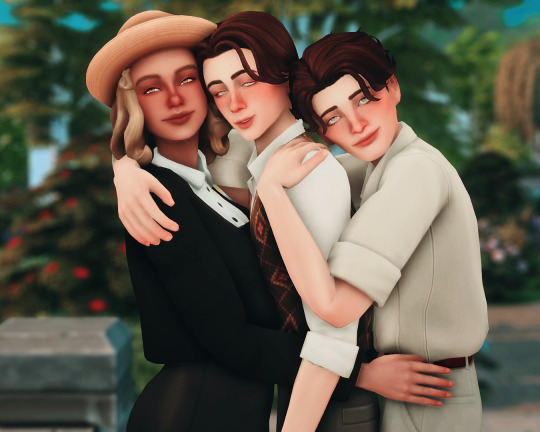


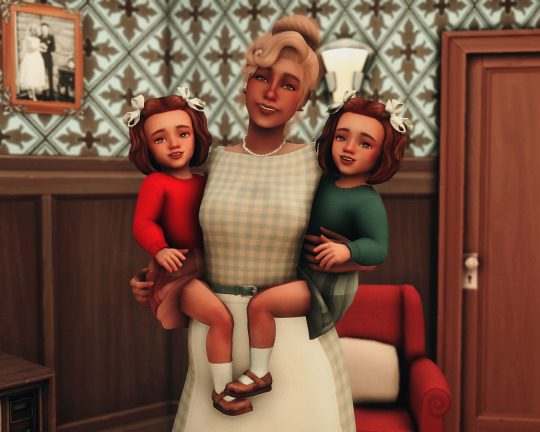


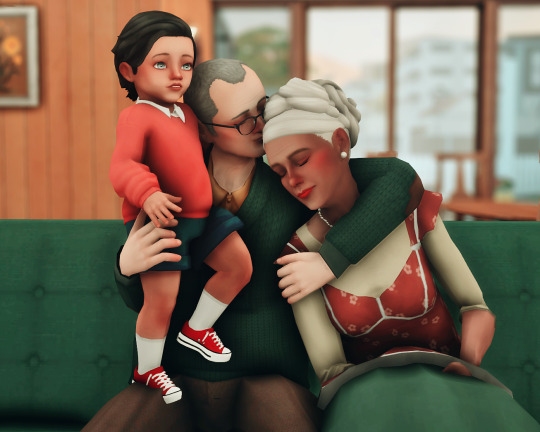
In Memory of Margot Ruth
Rest in Peace Margot Ruth, heir to the 1950s of the Langston Legacy.
Maggie was probably my most favourite sim in this Legacy since Daisy. Born while her parents were away serving in WW2, she was raised by her grandmother Ruth on the family farm. She had a troubled childhood and a difficult relationship with her mother and father. She married her childhood friend Alex and created a big, happy family of her own. Maggie made mistakes in her life, but she was always there for her family through the good times and the bad.
In her lifetime Maggie maximised her Cooking, Gourmet Cooking, Piano and Parenting skills, and achieved her lifetime want of Big Happy Family.
She is survived by her children Desmond, Leonard, Violet, Pearl and Stella, and her grandchildren Buddy, Bethany, Jeffrey, Eleanor and Daphne.
#ts4 decades challenge#sims 4 decades challenge#sims 4 historical#ts4 historical#ts4 legacy#sims 4 legacy#the langston legacy#gen 8#1960s#margot brown#alex dreyfus#vincent brown#lewis brown#ruth langston#douglas brown#joan eastman#desmond dreyfus#pearl dreyfus#violet dreyfus
251 notes
·
View notes